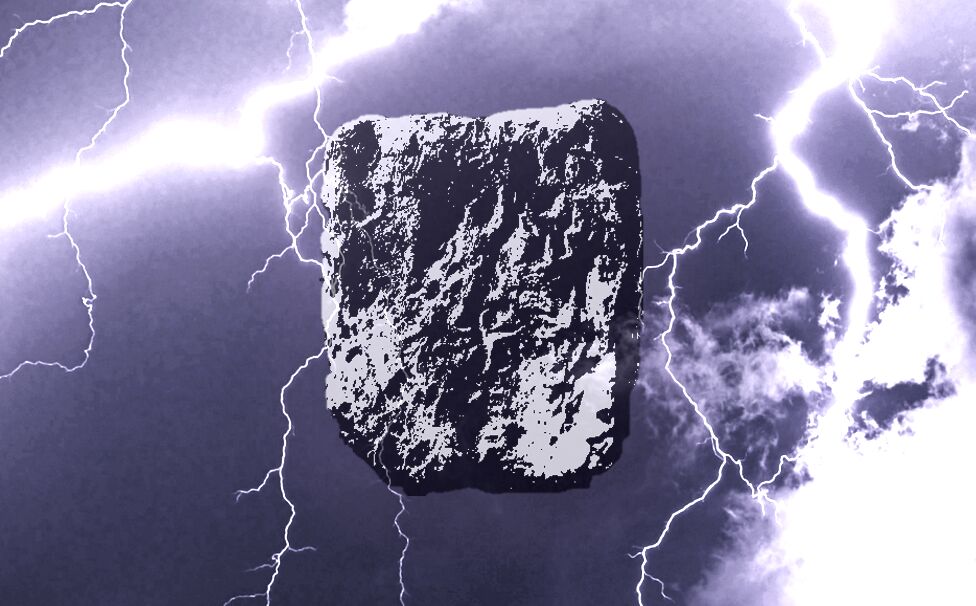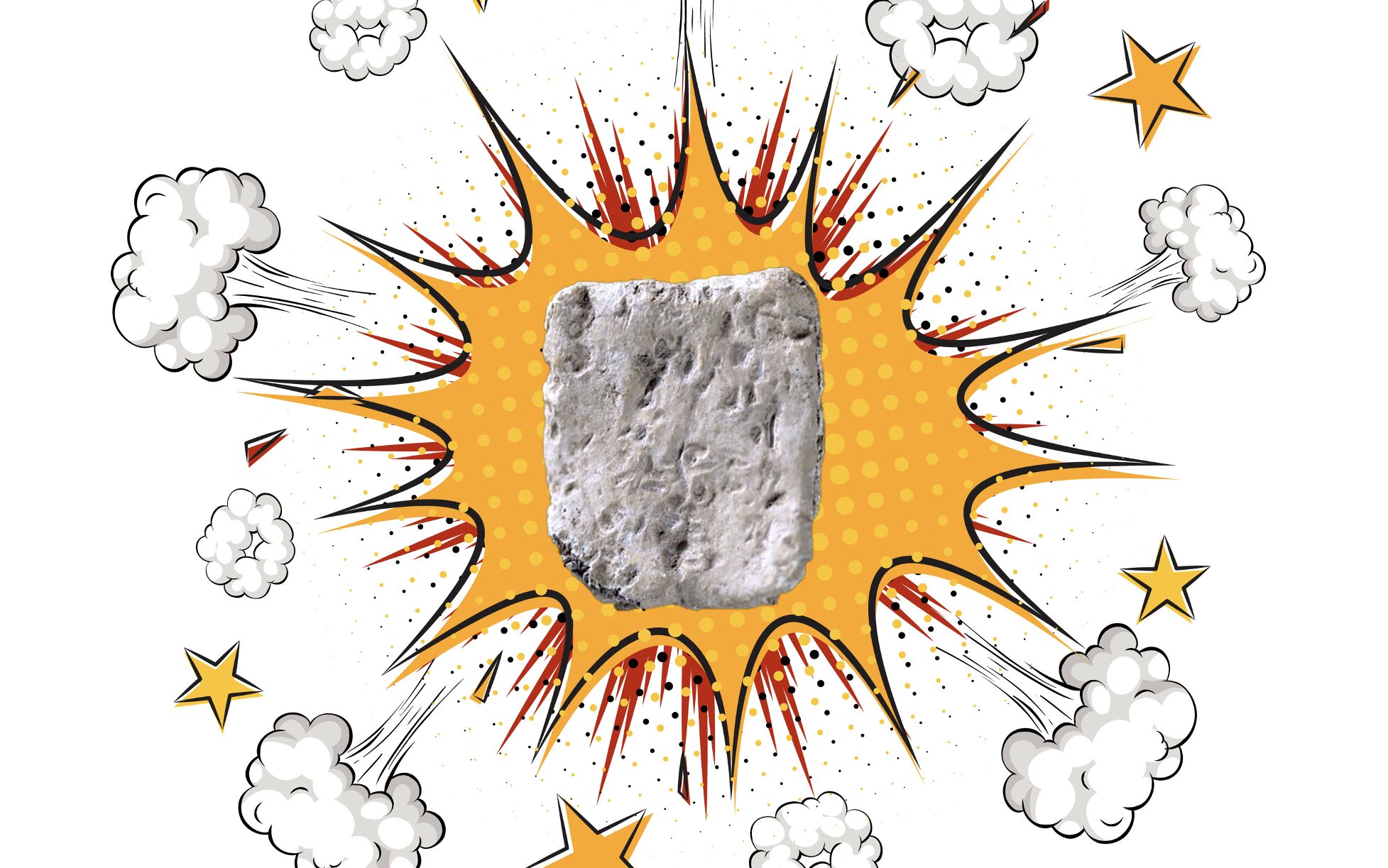The Mount Ebal “Curse Inscription” saga continues—this time with three Israel Exploration Journal (iej) articles contesting the identification of the artifact. The discourse has taken a rather fishy turn—quite literally. Here are the articles, as they appear in iej:
- “The So-Called Mount Ebal Curse Tablet: A Critical Response,” by Prof. Aren M. Maeir and Prof. Christopher Rollston
- “The Lead Object From Mount Ebal as a Fishing-Net Sinker,” by Prof. Amihai Mazar
- “The Source of the Lead of the Mount Ebal ‘Tablet’,” by Prof. Naama Yahalom-Mack.
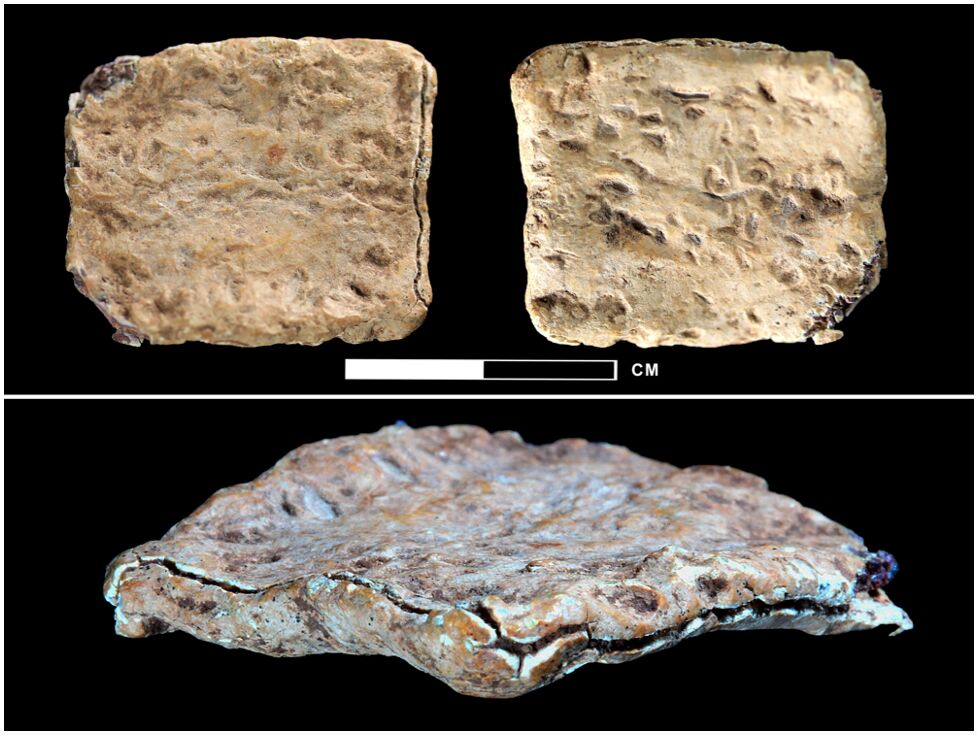
These articles, published at the end of last year, constituted the first major published rebuttal of the artifact as a curse tablet. And it’s fair to say that the content—particularly surrounding the interpretation of the artifact merely as a fishing-net sinker—has generated a maelstrom of discourse, ridicule and rebuttal. Interpretations range from the more nuanced Times of Israel’s Gavriel Fiske, who wrote “New Academic Articles Heap Fresh Doubt on Mount Ebal ‘Curse Tablet’ Interpretation,” to Haaretz’s Ariel David, who concluded, “[W]e might be very well dealing with a case of pareidolia, in which scholars with faith saw patterns that they wanted to see but are not actually there—just like when people see the face of Jesus in the burnt bits of their grilled cheese sandwich.” The tablet’s publishers and supporters have counterargued in interviews, blog posts and social media.
In addition to iej, other publications have drawn generally the same conclusions with different points of focus and emphasis. Mark Haughwout, for example, published an article in the journal Heritage Science (the same journal in which the original tablet article was published) titled, “Mt. Ebal Curse Tablet? A Refutation of the Claims Regarding the So-Called Mt. Ebal Curse Tablet.” Dr. Raz Kletter wrote “Galil and Goliath: A Land of Archaeological Sin?”, published in the Social Science Research Network, and the derivative “The Mt. Ebal Tablet: The First Ancient Postmodern Inscription?” posted to The Bible and Interpretation.
Followers of our website will be familiar with our more positive reporting on the inscription. But with this latest round of articles, there are areas of agreement and disagreement with all sides.
Here’s my take (belated, forgive me—what with the opening of our exhibit and new mega-issue of Let the Stones Speak).
Setting the Scene
To recap (those up-to-speed may wish to drop down to the next subhead): In January 2022, we became aware that this discovery was in the pipeline and would be released to the public via a peer-reviewed journal sometime around the end of summer that year. Barely two months later, the world of biblical archaeology exploded with news of the artifact, released at a press conference in Texas. (Apparently, some unsavory circumstances had necessitated the sudden, early release of the discovery to the general public.)
The announcement, in short, was the discovery at Mount Ebal (the biblical, conquest-period “mountain of curse”) of a miniature folded lead defixio (curse tablet), inscribed both inside and out with curse text. The item had been discovered in 2019, while Dr. Scott Stripling and his Associates of Biblical Research (abr) team wet-sifted the excavation dumps of Prof. Adam Zertal’s 1980s dig at the site of “Joshua’s Altar.” The item proved too fragile to unfold, so it had been sent to a specialist laboratory in Prague to undergo tomographic scans in an attempt to read the interior. The lead object was announced at the press release as containing the following inscription: “Cursed, cursed, cursed—cursed by the God yhw; You will die cursed; Cursed you will surely die; Cursed by yhw—cursed, cursed, cursed.” It was further noted that the item had been discovered among other Late Bronze/Early Iron Age material and faunal remains at the site, thus collectively befitting the biblical account of “cursing” at the altar (i.e. Deuteronomy 11:29; Joshua 8:30-31).

Unfortunately, little to no imagery of the item was shown at the press release; interested parties eagerly anticipated the eventual release of the discovery via a peer-reviewed journal.
We initially reported on the discovery the same day. That same month, our Let the Stones Speak magazine featured Mount Ebal, the Israelite conquest period, and the original work of the late Professor Zertal. Our Let the Stones Speak podcast host Brent Nagtegaal conducted two interviews with Dr. Stripling on the subject (here and here), and a general summary program on the subject. Based on additional information highlighted in one of Stripling’s interviews, we published another article.
In the months following the release, a significant level of pushback developed in the archaeological community, primarily regarding the manner of initial announcement (via press release to the public, prior to the peer-reviewed publication), as well as the lack of supplied pictures or scans of the otherwise-sensational curse text. Haaretz took things to the nth degree, bringing forward accusations of illegality in its controversially-titled piece: “From West Bank Debris to Evangelical Hands: The Shady Journey of a Bible-Era Curse.” The article charged that the artifact had been removed illegally from an area of Palestinian control and had further been wrongfully taken outside of the country to Prague. We noted these and other criticisms in another article.
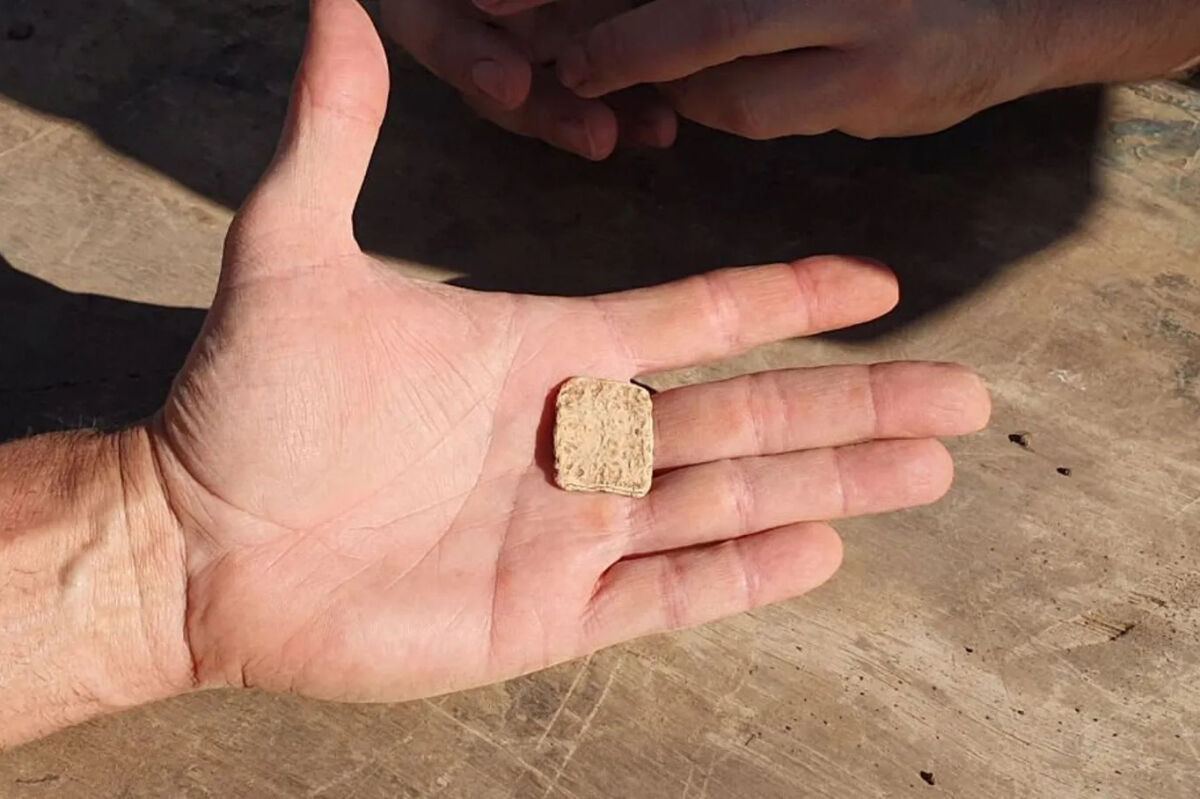
The official peer-reviewed article for the discovery was finally published in May last year. This article largely focused on the reading for the interior of the tablet, including images of the tomographic scans. (The peer-reviewed article for the outer reading is still forthcoming.) This article also included the archaeological context of the discovery—particularly, the Late Bronze/Early Iron Age context, including ceramics and faunal remains excavated from the site.
Following the publication of the peer-reviewed article, a number of different takes from various scholars and enthusiasts appeared. Some were positive, some neutral, but many negative, complaining that the scans of the interior of the artifact did not show discernible letters, but instead, merely dents and striations. Further, the variable-sized “letters” and veritable spaghetti-direction of text necessary to produce such a reading were also criticized as entirely illogical.
We featured these, along with some of our own concerns as well as positive takeaways, in another article. Brent followed up post-peer review publication with another interview of Dr. Stripling, as well as a general interview with Zertal’s former Ebal associate, Zvi Koenigsberg.
Now, we have the first official publications countering the interpretation of the inscription.
The Latest iej Articles

These articles were featured in Volume 73, No. 2 of the Israel Exploration Journal, which went to press in December last year and began hitting mailboxes early this year. Here’s a brief summary of their content.
The first article, by Tell es-Safi excavator Prof. Aren Maeir and epigrapher Prof. Christopher Rollston—titled “The So-Called Mount Ebal Curse Tablet: A Critical Response”—takes aim primarily at the purported text of the inscription itself. It essentially argues that there is no inscription to be seen at all, or at least not one corresponding with the scans provided in the peer-reviewed article. “This brings us to the crux of the problem with the editio princeps of the Mount Ebal lead tablet ‘inscription,’” they wrote. “The published photos and drawings simply do not correspond.” They also outlined various logical issues with the proposed text itself, as presented by the tablet’s lead epigraphers (Prof. Gershon Galil and Dr. Peter van der Veen), separate and apart from whether or not such text could be seen on the item. They concluded:
Naturally, within the field of epigraphy, there will sometimes be minor differences between scholars regarding this or that letter or even a few letters. That is fine, and the sorts of discussions that arise from these differences are often beneficial and normally result in a consensus. However, in the case of the Mount Ebal object, there is no general agreement about most of the letters or debates only about a few. Precisely the reverse is the case.
We are not necessarily stating that no letters are present (although we are very doubtful). We are suggesting that there is no proof that they are. … [W]hat we see in these photos are not letters but random scratches, striations, pitting and indentations.
The second article, by Hebrew University’s Prof. Amihai Mazar, has caused the biggest stir in reporting. In “The Lead Object From Mount Ebal as a Fishing-Net Sinker,” Mazar highlighted folded lead parallels known from various sites around the Mediterranean and the Levant, used as weights for fishing nets. He pointed out, with a number of photographs and drawings, that “similar lead objects, defined as such weights … were common throughout the eastern Mediterranean, in particular during the Late Bronze ii and Iron Age i, a time partly corresponding with the main period of occupation at the site of Mount Ebal.” As such, he concluded that “its identification as a sinker is adequately secure. The signs thought to be letters recall incisions and decorations marked on the lead sheets used to prepare such sinkers before folding, but could also be secondary.”
The third and final article was an isotopic report by Hebrew University metallurgist Prof. Naama Yahalom-Mack. In “The Source of the Lead of the Mount Ebal ‘Tablet’,” she provided a detailed isotope analysis, establishing the lead to have been sourced from the Lavrion mines, in Greece. This had already been made known to the public (and the study was conducted on behalf of Zvi Koenigsberg and Dr. Stripling). However, on the basis that the mines’ operation during the late second millennium b.c.e. had been held up as evidence for the dating of the artifact, Professor Yahalom-Mack emphasized that the mines of Lavrion “were exploited almost continually from the fourth millennium b.c.e. until the Late Roman period. As such, the source of the lead is inconclusive as a factor in determining the secure date of this artifact.” She concluded: “The suggestion of A. Mazar (2023) that the alleged inscription ‘tablet’ is, in fact, a fishing-net weight (sinker) is supported by the results presented here, as additional net sinkers are isotopically consistent with the Mount Ebal artifact and were likely made of lead from the same source.”
Since the iej publication, various journalists have published their own reports, and various biblical archaeology websites, blogs and podcasts have featured commentary on the articles, including rebuttals on various points from Dr. Stripling and associates—again, particularly taking aim at refuting the identification of the item as a mere fishing weight. Here are some personal observations.
Text Criticism
At the “Epigraphy in Judah” conference in May last year (just following the publication of the peer-reviewed article), I had the opportunity to discuss the artifact with Prof. Christopher Rollston, as well as with epigrapher Dr. Gad Barnea, an outspoken critic of the item. At that time, I didn’t realize just how fundamentally they disagreed with its identification as an inscription at all—to the point of there being nothing written on the item.
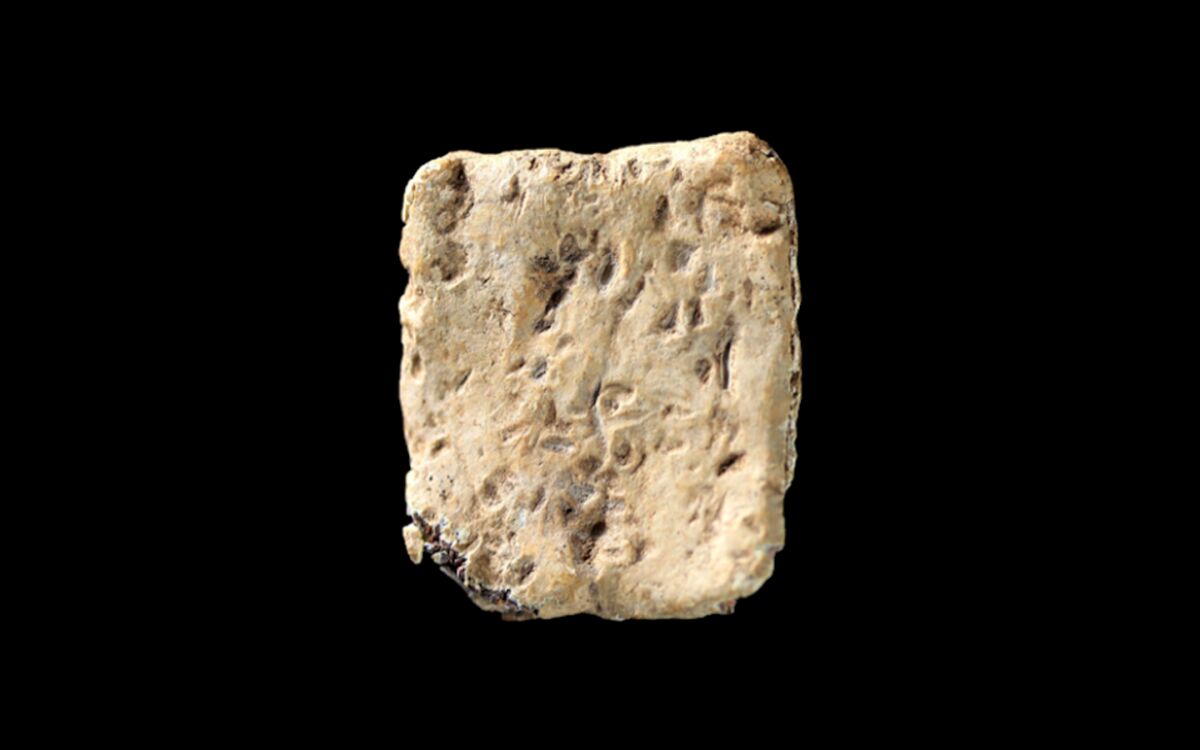
Personally, I do believe the artifact to have deliberate engravings on its outer surface—that much seems apparent to me from the photographs and seems to be more than just accidental indentation. Of course, we still await the publication of these outer faces of the tablet. To be honest, though, the scans provided of the “letters” on the inside were disappointing. The letters appeared at best less than conclusive—difficulties with providing flattened 2D images from the interior of a miniature lead object notwithstanding. But much more surprising were the wildly varying sizes and orientations of the proposed letters—even more so, the tangled path in which the inscription was proposed to be read—a veritable alphabet soup, in which the arrangement of letters into words and sentences becomes anyone’s guess.
Apparently, this full reading as proposed in Heritage Science was almost entirely the product of Galil. Van der Veen had a much more minimalist reading of certain words (like “El,” “yhw,” and “curse”), some letters of which were also similarly identified by Prof. Daniela Urbanová (an expert in the field of defixiones—curse amulets), which seems more reasonable to me. In any case, I certainly have no quarrel with Maeir and Rollston’s criticism of the reading. It was the job of the peer-reviewed article to provide sufficient evidence, if not for the text as a whole, then at least for a bulk of the inscription—and in this, it objectively did not deliver.
Still, I don’t see how such tomographic scans of the inside of a miniature lead object could conclusively deliver. Short of somehow opening the object (have we not put men on the moon?!), I don’t see how we can get any kind of satisfactory, conclusive picture of what is contained within—certainly not anything close to drawing a consensus understanding.
The Metallurgy Report
There is some additional nuance regarding Yahalom-Mack’s metallurgy report. Again, the source of the lead—Greece’s Lavrion mines—had already been widely known and reported on. And her conclusion—that the mine’s continuous operation over the course of thousands of years meant that it could not be used to date the artifact—has also been highlighted by Stripling and van der Veen as never being in dispute: “We never stated or implied that the lead source proved the date” (per Stripling’s response to similar allegations in Haughwout’s article). Rather, they highlighted that trade patterns at the end of the second millennium b.c.e. (in relation to the Bronze Age Collapse) would have provided a likely cutoff point for the arrival of such an item, matching the material culture found in the excavation dumps.
That may be true for the peer-reviewed journal article; however, in a Facebook post on May 12, 2023, Galil wrote: “The dating is based on the archaeological context … palaeographic examination [letter typology] … and on the metallurgical analysis of the lead, conducted by Prof. Naama Yahalom-Mack, of the Hebrew University, determining that it was sourced from Lavrion, in Greece, and dates to the Late Bronze ii (her article will be published separately and soon)” (translated from Hebrew).
In discussing this subject with Professor Yahalom-Mack at Hebrew University last year, she had expressed surprise at the statement, given the broad time period in which the mines were in operation. In any event, the metallurgical analysis can only be generally inconclusive regarding actual dating and leaves open the field for speculation as to probable periods of trade operations. (Still, the fact that the mines were in operation up until the Late Roman period at least helps counter a more extreme critical notion, that the lead item was the product of modern intrusion.)
Of course, I don’t think there is any quarrel to be had with her metallurgical analysis. That leaves just one paper.
Tablet as Sinker?
This was the big one. Was the curse tablet really just an ancient fishing-net sinker all along? This is the article that has united certain opponents in dismissal and even ridicule of the object, and it has been the key target of refutation among supporters of the curse tablet’s identification.
Indeed, similar-sized folded lead tablets have been found around the Mediterranean coasts, of different types and sub-types, attributable to this very period in question. The type identified by Professor Mazar as parallel to the Ebal lead item is type L2.3, which appears from the Late Bronze Age and especially the Iron Age i. More specifically, it is proposed as falling into the category of subtype L2.3b. Mazar notes that L2.3b “is rare in the Levant but well known in Crete and Attica.”
Bryan Windle—a colleague of Stripling and a staff researcher and writer for abr—emphasized the comparative lack of these L2.3b sinkers in the Levant. He summarized (on his website Bible Archaeology Report): “Of the 333 Type L2.3 fishing weights found in the Levant, only two are allegedly Type L2.3b, which Mazar classifies the Mt Ebal tablet as. These two were discovered in a tomb at a coastal site near Gaza and published by Petrie” (“More Thoughts on the Lead Tablet From Mt. Ebal”). Further, such lead fishing weights generally have a well-preserved curvature on the inside edge, from where the lead formed around the rope of the netting. The Mount Ebal lead piece does not; it is squeezed tightly and uniformly shut all the way across, with no sign of having been bound around a rope. (In his article, Mazar offers that “at a certain time after its original use it was subjected to the pressure of some considerable weight so that the two parts of the folded object were compressed together with no intervening space.”)
Probably the biggest criticism with the identification as a sinker, though, has been that this item was found nowhere near water. Again, the two other L2.3b examples were found in the Gaza coastal region. Other types of sinkers are also commonly dispersed around coastal regions—sites such as Achziv, Ashkelon, Chania (northwest Crete). The Mount Ebal object, however, was found up in the hill country of central Israel, on one of the highest peaks in Judea and Samaria (the West Bank)—roughly 30 kilometers (nearly 20 miles) from the Jordan River, 40 kilometers (25 miles) from the Mediterranean Sea, and 60 kilometers (nearly 40 miles) from the Sea of Galilee.
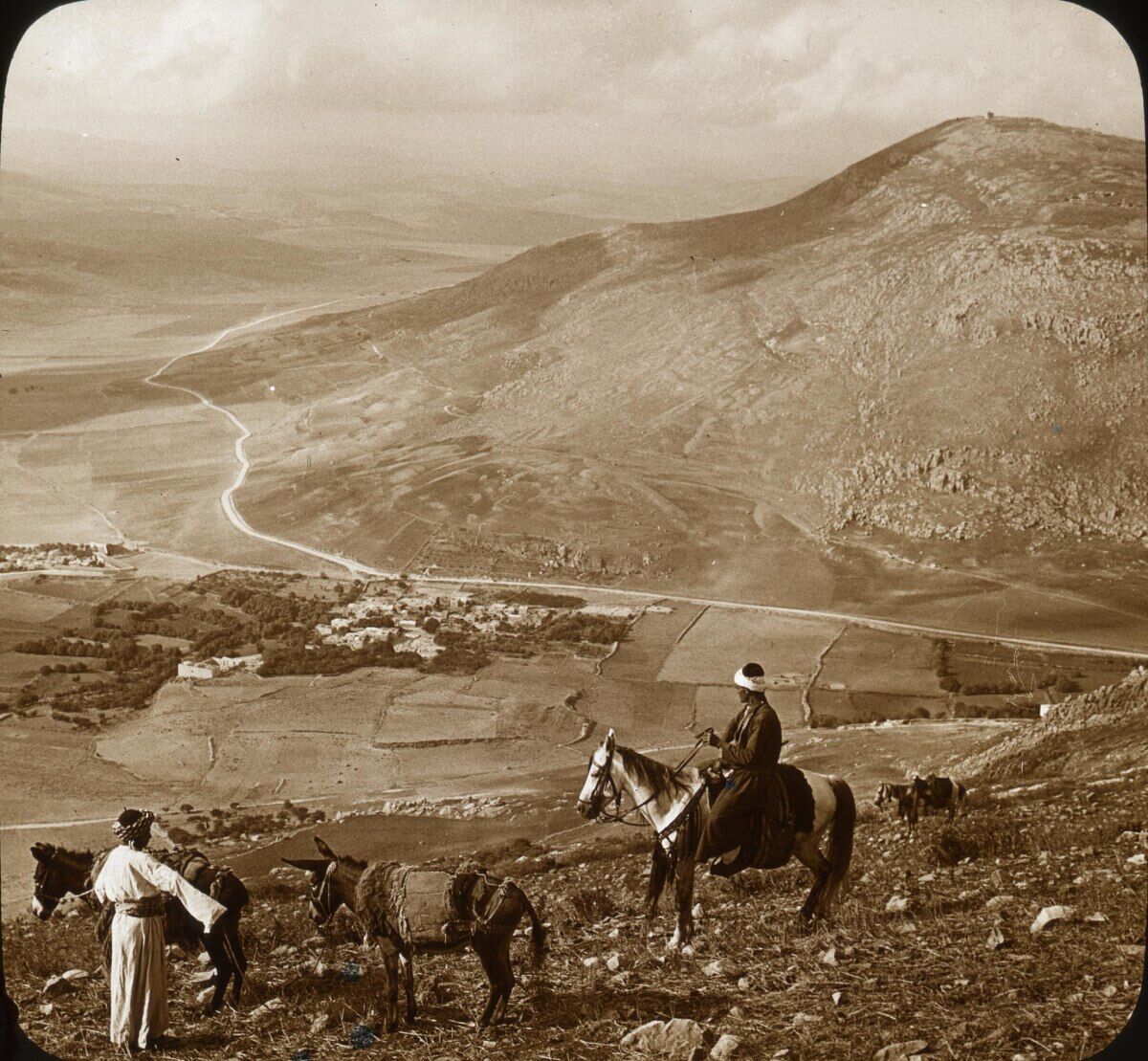
Professor Mazar admits this oddity in his conclusion. “Of course, one has to ask how and why a fishing-net sinker made of lead from Greece found its way to the inland, mountainous site of Mount Ebal, where almost no other imported objects except a few Egyptian scarabs and two small Mycenean sherds were found. This question remains to be answered.”
These are all justifiable objections to the identification of the item as a sinker. All that said, though—again, I personally don’t have a problem with the identification of the object as a sinker. Mazar’s identification seems quite plausible—not only based on the size and shape, but also the fact that it came from Lavrion, Greece, similar to other such sinkers, for use in the proximate Mediterranean fishing industry; also, given the dating of these other lead sinkers to the same general time period.
To me, however, the crux of the matter is not what the item started as; but rather what it ended as. Any metal can, and will, be reused—such is especially the case in the ancient world. And this gets to the heart of the matter—why it ended up on Mount Ebal. It surely wasn’t being used there as a fishing-net sinker.
The Big Picture
As concluded in our last article on this subject, it pays to zoom out and look at the big picture. One key piece of the puzzle is often left out entirely: Mount Ebal itself. This is the infamous biblical mountain of curse. Putting to one side the debate about whether or not there is a readable curse inscription on the item—whether or not dating can be determined in relation to its mine of origin—whether or not it was produced as a blank with the intention of becoming a fishing-net sinker—even the debate about whether or not the structure on Mount Ebal that the item was found alongside was really “Joshua’s altar”: What we have here is a tightly closed lead sheet—something that of itself, in just about any context, screams defixio (curse inscription)—on the biblical “mountain of curse,” no less—and found in a matrix of solidly Late Bronze/Early Iron Age material remains, befitting the same period of biblical conquest and period of “cursing” atop the mountain. That seems more than coincidental to me.
Yes, this item would be some centuries earlier than other known, similarly-folded lead curse inscriptions from the Mediterranean world (another objection). Welcome to archaeology—the “centuries earlier than expected” story comes up just about every other day. Such was the case with the triglyphs on the Khirbet Qeiyafa shrine—an architectural feature commonly associated with the mid-first millennium Greek world, yet found centuries earlier in the Judean hills, on an object dating to the end of the second millennium b.c.e. (An item, therefore, perhaps not so dissimilar to the Ebal tablet in relation to revised dating and geographical association.) Such was the case with the recently-announced Phoenician basket pendant. Such was the case with the recently-discovered roof tiles from the Givati Parking Lot excavations.
Yes, the item was found through wet sifting previously-excavated material, rather than in a pure excavation of stratified remains. But as anyone who has worked in wet-sifting knows, it is not a shoot-from-the-hip process, in which no reliable knowledge can be gleaned and should not be cause for unreasonable doubt. And the saturation of Late Bronze/Early Iron Age remains logically mandates the dating of this lead item to the same period. It would take a heavy burden of proof to say otherwise.
In all this, I tend to generally agree with Michael Banyai’s featured comment on Kletter’s article (an article that drew conclusions along similar lines to Maeir’s and Rollston’s), posted to The Bible and Interpretation. He wrote:
I partially agree with your insight, and as I stated, I would have discouraged any attempt to read something on the lead strip. Otherwise, as a matter of fact, without dealing with the text proper, but with the fact of a lead strip and its finding context [Mount Ebal], one must point at a widespread ancient tradition of lead curse spells, both Greek and Jewish, going back to an original Late Bronze Age Luwian tradition …. Therefore, the identification of the lead strip as a curse is most natural. I wouldn’t like to make myself a laughingstock assuming this to be a fishing weight lost on the arid summit of Mount Ebal. The reading is, however, unverifiable.

Cursed Destruction
Suffice it to say, this debate is not ending soon. But if anything is proof of a curse inscription, it is the trail of destruction that has been left in its wake. Both lead epigraphers of the tablet, Prof. Gershon Galil and Dr. Peter van der Veen, have since parted ways rather dramatically (with van der Veen recently decrying Galil’s interpretation—the one that was presented in the journal—as a “fantasy reading”). And in relation to this and other finds released by Galil to the press that same year (2022, including another near-verbatim “curse inscription,” as well as five new Siloam Tunnel inscriptions), a “Public Statement on the Publication of Archaeological Finds” was issued and signed by dozens of researchers. This statement, authored in part by the aforementioned Professor Maeir, criticized (without naming names) the spate of “game-changing” discoveries being “published in the popular press and on social media, prior to peer review,” and with next to no illustrative evidence provided.
But by the same token, such criticism is a two-way street. In his aforementioned article, Dr. Kletter—no supporter of Galil, nor the Ebal inscription—issued his own rebuke of Maeir, in his article “Galil and Goliath: A Land of Archaeological Sin?” In it, while disagreeing strongly with Galil’s interpretations, he defended the right of such researchers to release finds to the public as they see fit and accused Maeir of hypocrisy with his own handling of the Tell es-Safi “Goliath Inscription” in the mid-2000s.
It’s been almost surreal to watch: This bewitching artifact has torn apart both researchers united behind it as a curse inscription, and those united against it.
You’d almost be forgiven for thinking a spell had been cast. It seems that curse tablets aren’t meant to be opened—maybe not even via tomographic scans.
